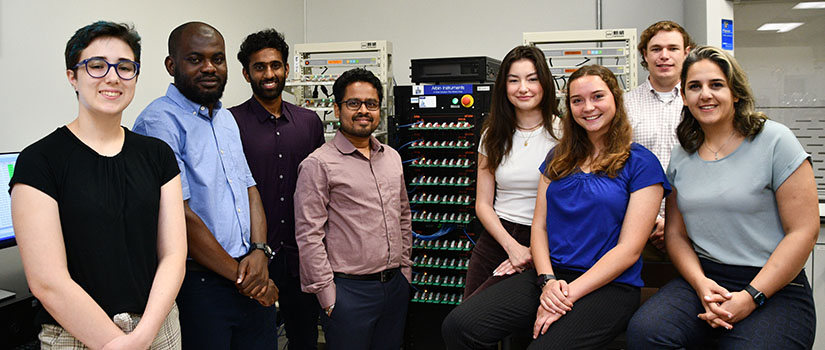A new material in development may make fueling nuclear reactors with uranium harvested from the ocean more feasible.
A new material in development may make fueling nuclear reactors with uranium harvested from the ocean more feasible.
By combining Department of Energy’s Oak Ridge National Laboratory’s (ORNL) high-capacity reusable adsorbents and a Florida company’s high-surface-area polyethylene fibers creates a material that can rapidly, selectively and economically extract valuable and precious dissolved metals from water.
The material, HiCap, outperforms today’s best adsorbents, which perform surface retention of solid or gas molecules, atoms or ions. HiCap also effectively removes toxic metals from water, according to results verified by researchers at Pacific Northwest National Laboratory.
“We have shown that our adsorbents can extract five to seven times more uranium at uptake rates seven times faster than the world’s best adsorbents,” said Chris Janke, one of the inventors and a member of ORNL’s Materials Science and Technology Division.
HiCap effectively narrows the fiscal gap between what exists today and what they need to economically extract some of the ocean’s estimated 4.5 billion tons of uranium. Although dissolved uranium exists in concentrations of just 3.2 parts per billion, the sheer volume means there would be enough to fuel the world’s nuclear reactors for centuries.
The goal of extracting uranium from the oceans began with research and development projects in the 1960s, with Japan conducting the majority of the work. Other countries pursuing this goal include Russia, China, Germany, Great Britain, India, South Korea, Turkey and the United States. Researchers developed adsorbent materials, but none has emerged as being economically viable.
What sets the ORNL material apart is the adsorbents are made from small diameter, round or non-round fibers with high surface areas and excellent mechanical properties. By tailoring the diameter and shape of the fibers, researchers can significantly increase surface area and adsorption capacity. This and ORNL’s patent pending technology to manufacture the adsorbent fibers results in a material able to selectively recover metals more quickly and with increased adsorption capacity, thereby dramatically increasing efficiency.
“Our HiCap adsorbents are made by subjecting high-surface area polyethylene fibers to ionizing radiation, then reacting these pre-irradiated fibers with chemical compounds that have a high affinity for selected metals,” Janke said.
After the processing, scientists can place HiCap adsorbents in water containing the targeted material, which ends up quickly and preferentially trapped. Scientists then remove the adsorbents from the water and the metals end up extracted using a simple acid elution method. They can then regenerate and reuse the adsorbent after conditioning it with potassium hydroxide.
In a direct comparison to the current state-of-the-art adsorbent, HiCap provides significantly higher uranium adsorption capacity, faster uptake and higher selectivity, according to test results. Specifically, HiCap’s adsorption capacity is seven times higher (146 vs. 22 grams of uranium per kilogram of adsorbent) in spiked solutions containing 6 parts per million of uranium at 20 degrees Celsius. In seawater, HiCap’s adsorption capacity of 3.94 grams of uranium per kilogram of adsorbent was more than five times higher than the world’s best at 0.74 grams of uranium per kilogram of adsorbent. The numbers for selectivity showed HiCap to be seven times higher.
“These results clearly demonstrate that higher surface area fibers translate to higher capacity,” Janke said.
ORNL researchers conducted field tests of the material at the Marine Sciences Laboratory of Pacific Northwest National Laboratory in Sequim, WA, and at the Rosenstiel School of Marine & Atmospheric Science and Broad Key Island in collaboration with the University of Miami.



